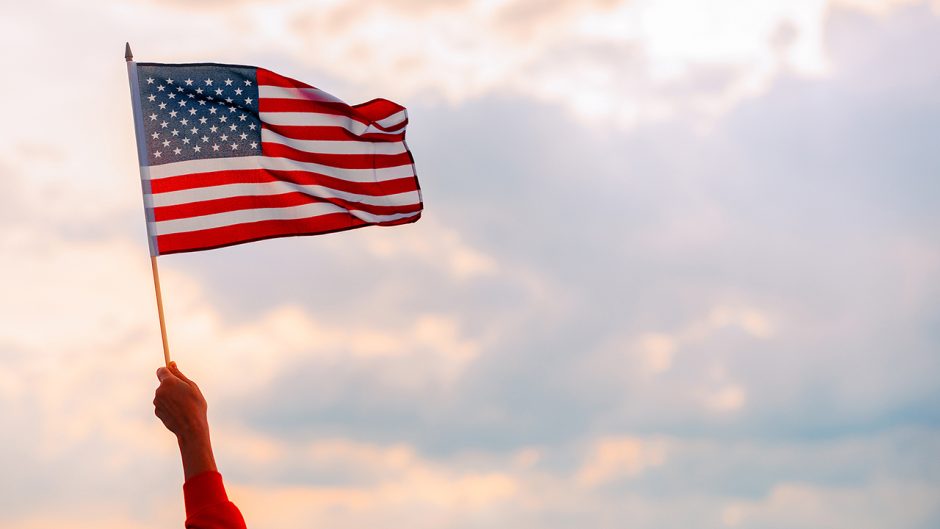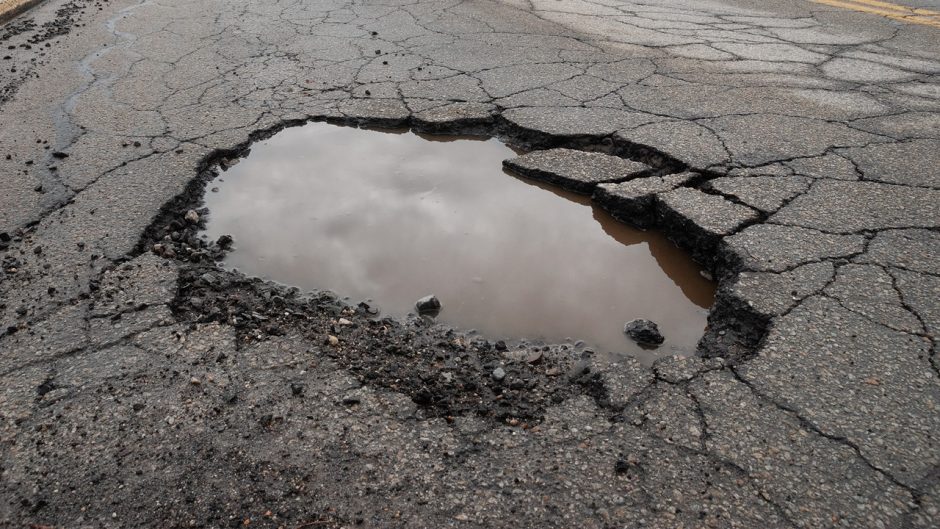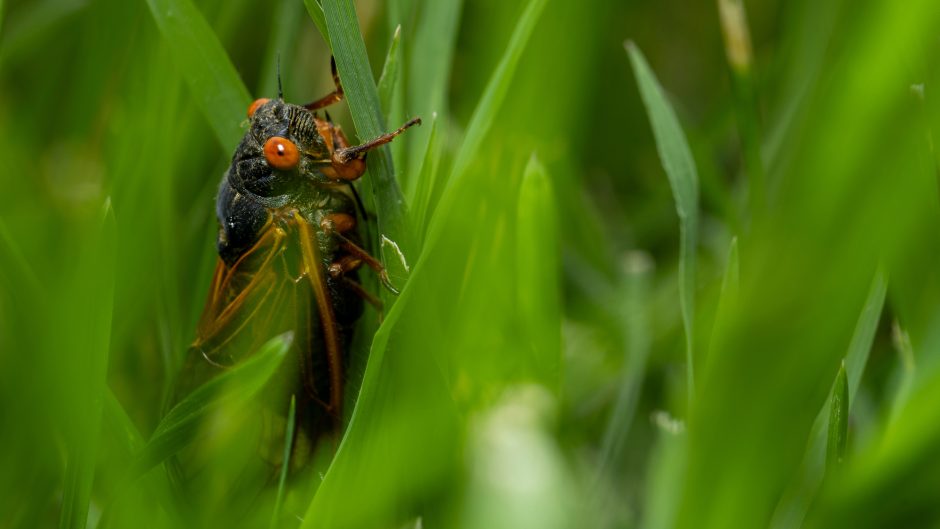

July 12, 2023
Contact: Eric Stann, 573-882-3346, StannE@missouri.edu
From energy-saving strategies to water-saving techniques, there are simple ways people can embrace the essence of the summer while also lowering their energy consumption. Here, Katherine Stockton and Michael Goldschmidt from the University of Missouri share simple energy-saving tips people can do around the home during the summer months.
Use fans to keep the house cool.
Stockton: Use fans instead of air conditioning. Sometimes when we’re “hungry” we’re just thirsty for water. This also applies to thermal comfort. Often when we want to cool ourselves down, our first instinct is to crank down the temperature on the thermostat, but typically a light breeze will do the trick. Also, if it’s cool enough outside, open windows and create a cross-breeze through the home.

Goldschmidt: Every year people should have a professional technician check their home’s air conditioning system to make sure it's running properly. Besides the fact that it could break down, it runs more energy efficient when inspected on a regular basis.
Limit use around the kitchen.
Stockton:
- Avoid using the oven when it’s hot outside. Instead, use small appliances like your microwave, toaster oven, slow cooker or air fryer for cooking food. They use half the energy of a regular oven and keep your kitchen cooler. Here’s some information from the Department of Energy on which appliances use the least amount of energy: https://www.energy.gov/energysaver/kitchen-appliances.
- Defrost food in the refrigerator because that will cool it down as the food defrosts.
- Cover pans when cooking on the stove and use the exhaust fans to avoid adding heat and humidity to your home.
- Let your dishes air-dry instead of making the dishwasher dry them. If a dish isn’t too dirty, give it a quick rinse instead of running it through a full cycle in the dishwasher.
Ideal room furnishings.
Stockton:
- Be smart about your flooring — ideally tile or a hard surface that slowly absorbs heat and can stay cool throughout the daytime.
- Paint your ceiling a light color. Many people don't realize ceilings are often painted white to reflect the light and conserve energy by reducing the need for artificial lighting. On that same note, you should always use LED lightbulbs to make rooms brighter, so you don't have to compensate for light with more energy use. As a bonus, install smart lights, motion detector lights and dimming lights in your home. These devices are easily installed and more readily available than ever before.
Goldschmidt: Make sure your ceiling fans are switched to summer mode — fan blades should be moving counterclockwise when you look up at your ceiling fan — to make the area that you're standing or sitting in cooler. All fans have this setting via a switch either on the ceiling fan device or via a remote control. Basically, in the summer you want cooling through air circulation, which is created via this counterclockwise downdraft. Otherwise, your fan is in winter mode — clockwise — and it's like a mini tornado pulling the hot air to the ceiling. This creates an updraft and shares the hot air on the ceiling with occupants on the lower portion of the room. Here's some information from the Department of Energy: https://www.energy.gov/energysaver/fans-cooling.
Shut the doors of unused rooms.
Stockton: Shut the doors to any unused rooms in your home or consider installing mini-split units to rooms that are continuously unused such as guest bedrooms.
Goldschmidt: To that point, you should close off the room for no more than 12 hours because the room still needs to be ventilated. Otherwise, humidity rises, and mold can develop. Therefore, during the day, shut off the rooms; at night, reopen them.
Cover windows.
Stockton: Window coverings are important to minimize the amount of solar heat entering the home. There’s a balance between the amount of natural light allowed into a space and the size of openings that inevitably leak solar heat into your home. Keep in mind that the east side of the home receives sun in the morning — typically a cooler time of day — while the south side receives the most sun during the middle of the day. The west side receives the most sun during the late afternoon and early evening which is often during the hottest time of the day. These are the sides of your home to focus the most attention on energy conservation.
Goldschmidt: Try using temporary reflective material or privacy film. I have reflective material on my house’s southwest window, and it has probably cut 10% from our air conditioning bill.
Change your air filter on a regular basis.
Stockton: Change your home’s air conditioning filter on a regular basis, especially if it frequently becomes clogged with lint, hair and dust. This will allow air to flow and your appliances to work more efficiently.
Goldschmidt: Also check the way the arrow points on the air filter — it generally points in the direction the air is flowing. If it's pointing in the opposite direction, it will substantially cut down on the efficiency of the air conditioning system.
Wash clothes using cold water.
Stockton: Wash your clothes using cold water. Be sure to only wash “full loads” — it uses the same amount of energy no matter the size of the load in the machine. Also, give the dryer a break and try air-drying with clotheslines or indoor drying racks.
Other quick fixes.
Stockton:
- Smart thermostats are more readily available than ever before. Most of these come with energy-saving-modes.
- Install a “smart meter” that can track your energy use and help you moderate and calibrate your home for an optimal balance.
- Replace shower heads with low-flow models that will cut your water usage up to one-third while seemingly using the same amount of water.
- Avoid doing high-energy tasks during “peak times.” In other words, everyone showers in the morning and cooks in the evening. Anything you can do to offset these peak demand hours is helping the overall demand on the energy grid. Plus, if you use energy during the cooler, evening hours in the summer, you’re less likely to heat up your home.
Goldschmidt:
- Install weatherstripping around doors, windows and other areas of the house where small cracks transfer air from the outside. For instance, most hardware stores sell rope caulk which can be squeezed around doors and windows. There also are seals that can be installed around doors and windows.
- Make sure to set the temperature of your water heater to 120 degrees, which is the threshold to save energy but still hot enough to destroy harmful bacteria.
Around the garden.
Stockton: Native plants require less water because they’ve adapted to the area’s typical amount of rainfall for millennia. They also have deeper root systems which help replenish fresh water to our aquifers. But if you are watering plants, do it during the cooler part of the day. For instance, I like to water in the evening, which allows the moisture to seep in overnight rather than evaporating rapidly in hot daytime temperatures.
Take advantage of incentive programs offered by municipalities.
Goldschmidt: Some cities have incentive programs that reward citizens who participate in energy-saving practices with rebates or lower utility costs.
Editor’s Note:
Stockton is an assistant teaching professor in MU’s Department of Architectural Studies who is leading her field toward more sustainable solutions on a local, national and global scale. Goldschmidt is an associate teaching professor in the Department of Architectural Studies with an appointment at MU Extension. He has also directed the USDA/HUD National Healthy Homes Partnership.




